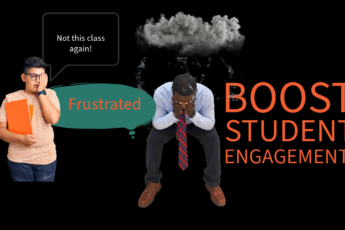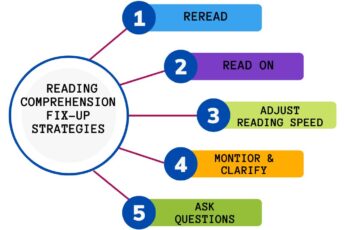Until The Ineffective Teacher Does This, The Academic Needle Will Remain Static

Highly effective teachers have very distinct traits. And so do highly ineffective teachers.
Yep. That’s exactly what I said. Highly ineffective. A term you’re probably not used to hearing.
Well, they exist. I mean, everything has an opposite, right?
So, if there are highly effective teachers, there are highly ineffective teachers.
Before I write this blog, let me tell you now . . . I’m in my feelings.
Why? Because what happens in the classroom changes lives—for better or worse. And there are too many who take what they do in the classroom lightly.
Since what happens in the classroom is profoundly impactful, we must eradicate mediocrity. It’s something we shouldn’t accept.
There’s no place for it in the classroom.
And in thinking about mediocrity, I can’t help but to think about teachers I know who are comfortable in that space, which frustrates the hell out of me.
Before I delve in about the 1 thing highly effective teachers do that highly ineffective teachers don’t do, I think it’s imperative and responsible that I make a few things known.
So, here they are:
- This blog isn’t about all highly ineffective teachers. I’m specifically talking about highly ineffective teachers who don’t do this 1 thing.
- The highly ineffective teachers I’m talking about work in schools where a positive culture and climate exist in tandem
- Schools were the coaches and administration are supportive and have positive relationships with teachers
- I’m not talking about the highly ineffective teachers who are doing the opposite of what I discuss in this article.
So, What Do I Mean By Highly Effective and Highly Ineffective Teachers?
Highly Effective Teachers
In addition to creating a classroom community and culture of learning, on end-of-the year standardized assessments, 80% or more of their students consistently (3+ consecutive years) perform at or above grade level expectations. And in terms of academic growth, 80% or more of their students meet and/or exceed goal targets.
But let me say this, if they’re only getting growth, they aren’t highly effective, as proficiency is the end goal.
Highly Ineffective Teachers
While these teachers are just as skillful as highly effective teachers in creating a classroom community and culture of learning, when it comes to end-of-the year standardized assessments, 70% or more of their students consistently (3+ consecutive years) perform below grade level expectations. In terms of academic growth, 50% or more of their students miss goal targets.
Student Achievement Matters

For those who want to argue that teaching is more than test scores and that we can’t quantify learning, I agree–to an extent.
I wholeheartedly agree that we can’t quantify and measure everything that a student learns in a teacher’s class.
But what we can do is measure the impact a teacher’s instruction has on student learning.
How Do Ineffective Teachers Become Highly Ineffective?

Do they not care?
Is it that they’re ok with students not meeting grade level expectations?
You might find it hard to believe, but from my experience, ironically, they do care. And they’re not ok with students not meeting grade level standards.
Oddly, though, regardless of how many years students fail or underperform under their tutelage, their instructional practices remain static.
Now, if you’re anything like me when it comes to decision making, you’re probably wondering why someone would continue implementing a practice that has proven ineffective–especially when it comes to impacting the trajectory of students’ lives.
Here’s why they don’t change their practices: They make teaching a “me” thing.
When teachers make it about themselves, instead of focusing on the teaching and learning, they focus solely on the teaching–what they did–not what students learned.
Here’s an example that puts it into perspective.
After teaching a math lesson on rounding, when grading exit tickets, Mr. Gavin noticed majority of his students didn’t master the lesson’s learning target. During a conversation with his coach about his students’ performance, he discussed all of the strategies he implemented and students’ lack of readiness for the content.
When the coach asked him to reflect of his instruction and how it impacted student learning, he talked about what he would do differently, but he never accepted ownership of why students didn’t master the learning target.
In the example above, Mr. Gavin didn’t link the instruction to the learning. And he avoided critical reflection. To him, he did everything he was supposed to do.
What the students learned was because of his instruction. And what they didn’t was because of an interference (an internal or external barrier such as student motivation or student behavior that adversely impacts student learning)–not the instruction.
Therein lies the problem.
Before I discuss the 1 thing highly effective teachers do that ineffective teachers don’t, let me say this:
Save the Bull*hit for Someone Else!

As I’ve said before, I’ve only worked in high poverty Title 1 schools, so I know what it’s like to teach struggling students who come from disadvantaged backgrounds.
And I know what it’s like to have students who don’t meet grade level expectations.
However, because I’m not comfortable with mediocrity and because I was aware of the profound effect my work had on students’ lives, getting it (teaching and learning) right was something I had to do. And I did.
I knew that I had it right when my students began to not only consistently perform well on classroom assessments, but also consistently outperform students taught by other teachers on standardized assessments.
When I tell you I put in work, I worked my ass off! I can wholeheartedly say it was no doddle.
As an instructional coach and consultant, when I’ve had talks with teachers about what it takes to move the academic needle with struggling students, they responded with comments like, “I’m not doing all of that.” Or “That’s just too much!”
That’s when I respond with, “We’ll you need to work with a different student population.”
I said all that to say, I’ve been there, done that, and have a track record of classroom success with students who come from disparate populations.
It can be done. I don’t want to hear all the reasons why students can’t or didn’t.
Save it for someone else. Cause I’m not the one.
The Ineffective Teacher: It’s Never Them

From my experience, highly ineffective teachers avoid engaging in critical lesson reflection, and when it comes to what students didn’t master, they absolve themselves of accountability.
“Claim your losses like you claims your wins.“
When students don’t get it, it’s everything and everybody’s fault, except the man in the mirror.
Let’s take a look at where these teachers place the blame.
It’s Not Me, It’s Student Readiness
While ineffective teachers in lower elementary (grades k-2) blame students’ low performance on deficits they have upon entering school, in upper elementary (grades 3-5), they blame the low performance on learning gaps.
In the upper elementary grades, teachers often
talk about not being able to spend adequate time on grade level standards due to having to carve out time to fill learning gaps.
It’s Not me, It’s Student Processing
When highly ineffective teachers identify student processing as the culprit, you’ll hear comments about students not grasping the concept or skill despite the use of different instructional methods.
You’ll hear statements like the following:
- “They can do it with me, but not independently.”
- “It’s like they get confused”
- “They’re just not getting it.”
- “It’s developmentally inappropriate.”
- and “We can go over it one day. But the next day it’s like they don’t remember.”
Before I move on to the next thing to which highly ineffective teachers place the blame, let me share a personal experience I had with thinking it was student processing.
One year, it was my second year of teaching to be exact, all of my students, except two, mastered using the standard algorithm for long division.
Ejana and Crystal. I can vividly recall their many facial expressions during those lessons. The clarity of my instructional delivery and the multiple strategies I implemented were ineffective.
Regardless of what I did, they didn’t get it
During parent conference, I remember explaining to their parents all of the strategies I had implemented to no avail. When I think back to those two conferences, I made one implication clear: It’s them. Not me.
About 10 years later, I was introduced to several strategies for teaching division.
Once I learned those strategies, I said to myself: It was me–my content knowledge. Not them.
It’s Not me, They’re Just Not Motivated
Blaming student motivation sounds like
- “She doesn’t pay attention.”
- “He won’t do the work.”
- “It’s like I’m talking to myself.”
- “It’s like I have to stand on my head.”
It’s Not Me, They Have A Rough Home Life
These teachers talk about all the variables in the child’s life that can adversely affect student performance.
Here’s What I think About Those Reasons
While all can, indeed, be barriers, everything a teacher does in the classroom indubitably impacts student performance—for better or worse.
And that’s just that.
That’s why as teacher researchers—because that’s what we are or at least should be—we must manipulate the variables within our control that impact student learning. With instruction being number one, following SEL.
When instructional practices are appropriately aligned to students’ needs, students don’t just grow, they excel.
What Do Highly Effective Teachers Do Differently?

They take it personally.
When students underperform, they internalize it. They feel like they missed the mark. Like they didn’t do something right.
Unlike highly ineffective teachers, highly effective teachers take ownership.
They always feel like there’s something they could’ve done differently that would’ve had a greater positive impact on student learning.
This is one thing that distinctly separates them from highly ineffective teachers.
Highly effective teachers don’t deny the correlation between their instruction and what students learn; they accept it.
Because of this, they’re always
- reflecting on their instructional practices and its impact
- studying pedagogy and refining their practices
- monitoring student progress and adjusting instruction
These teachers know that there’s a breakdown in instructional delivery whenever students don’t understand something. Hence, why they’re always analyzing what they do and its effects.
1 Reason Why Highly Effective Teachers Take Ownership

Unlike highly ineffective teachers, highly effective teachers understand that nuances in instruction significantly impact what students do and don’t learn. And they work diligently to perfect those nuances whereas highly ineffective teachers don’t.
As I stated earlier, the highly ineffective teacher–the specific type I describe in this blog–shifts the blame and dismisses the correlation between instruction–especially theirs–and student learning.
Therefore, they don’t feel compelled to refine their instructional practices.
The good thing, though, is that highly ineffective teachers don’t have to remain in the space of ineffectiveness. Becoming highly effective is a goal they can, indeed, attain.
To get there, however, they must do one thing first.
And that is. . .
Take ownership.






Leave a Comment